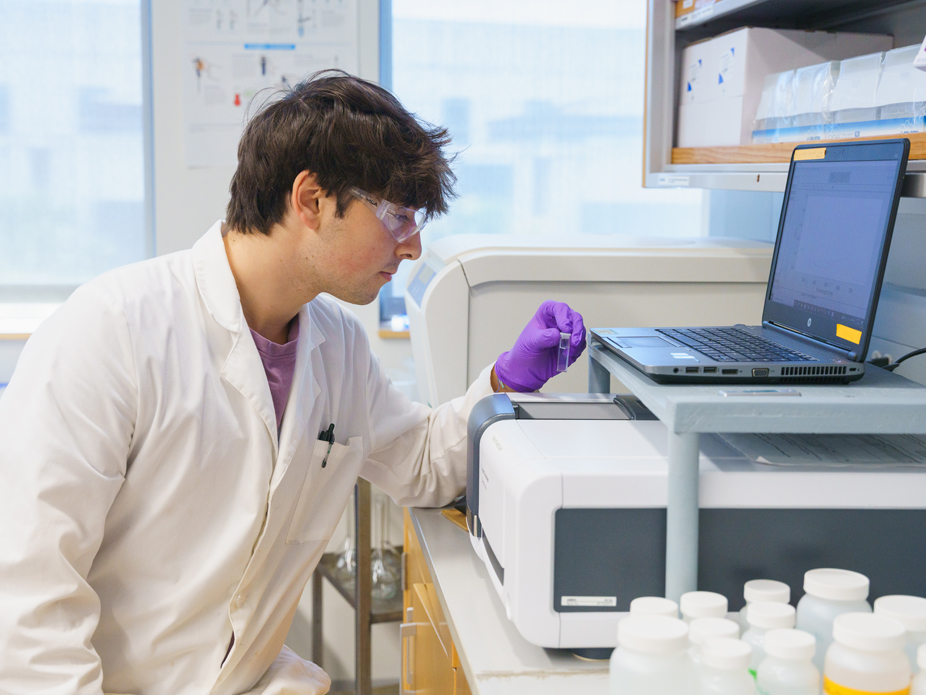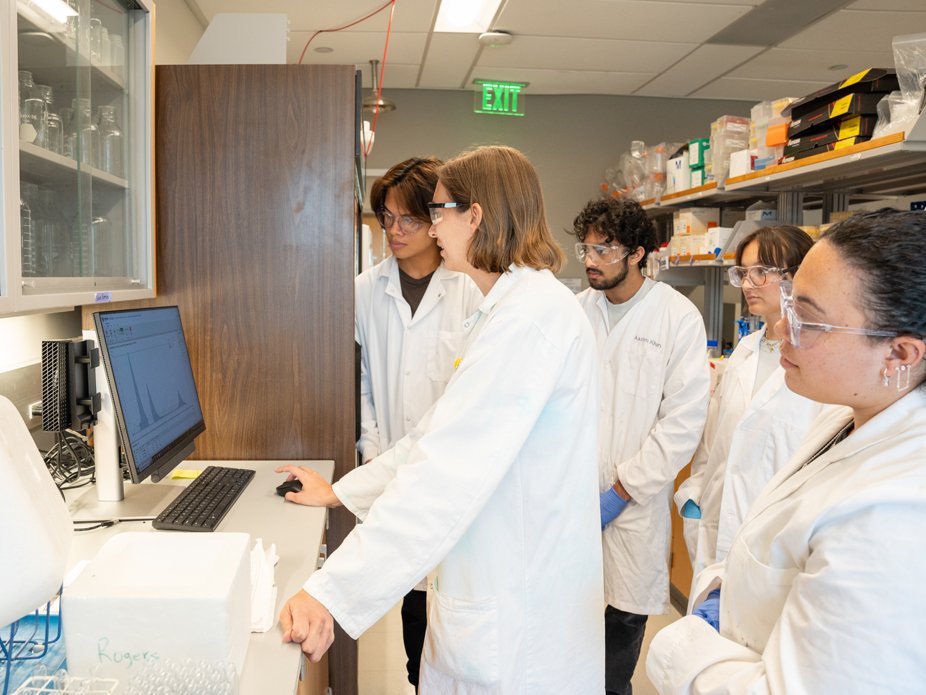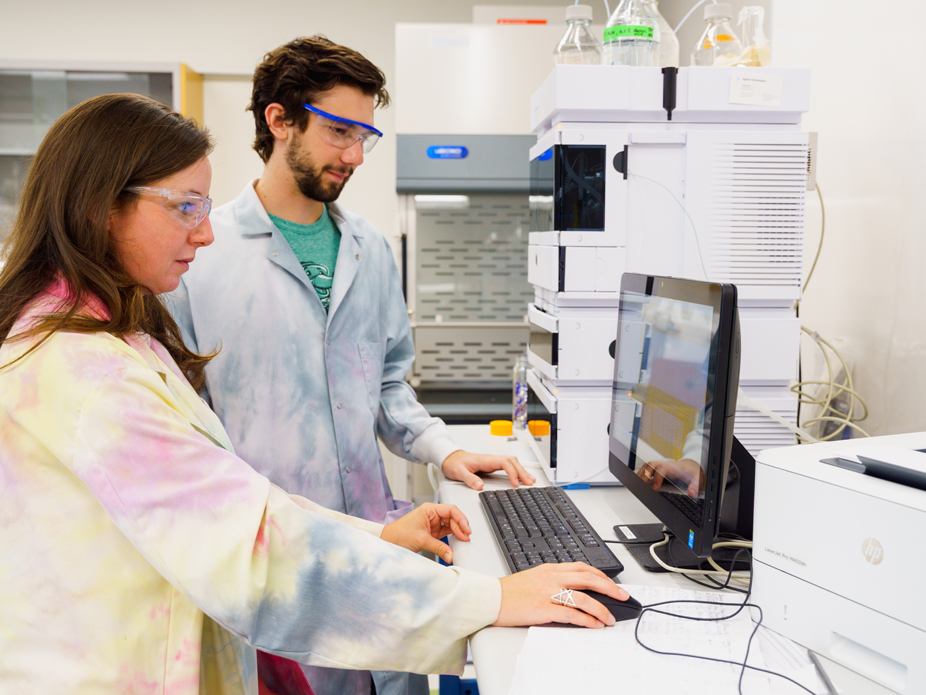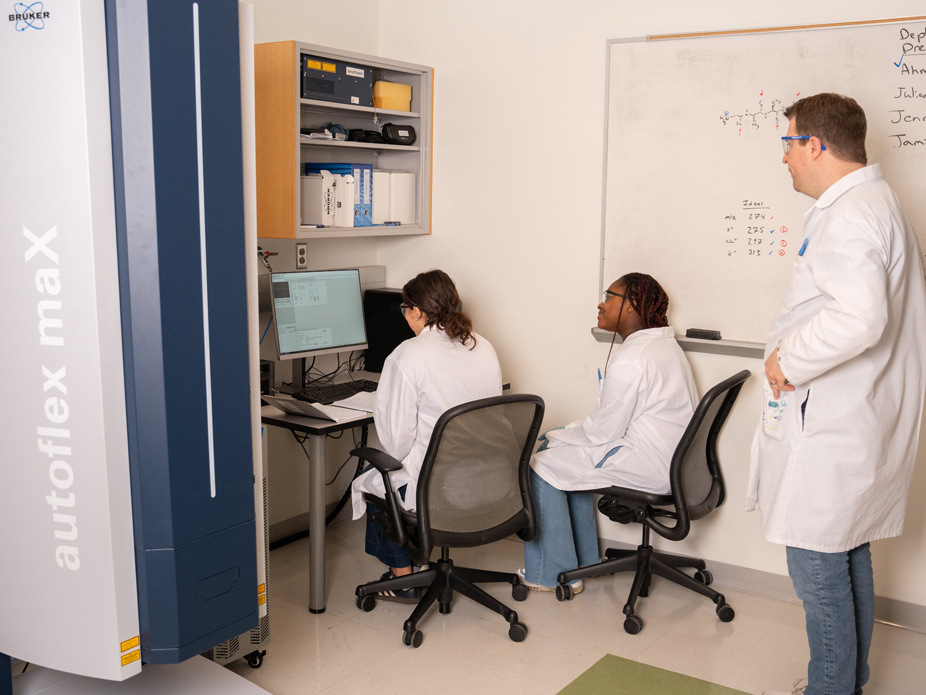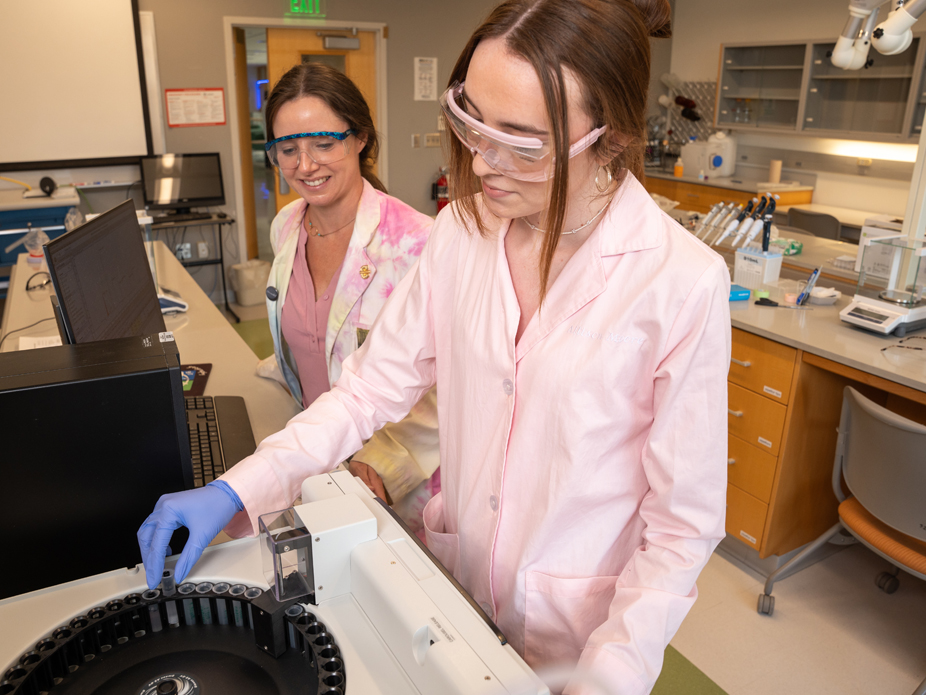Instrumentation
You're not just an observer in a lab.
You're a participant in a discovery.
We have the tools to help you.
Discover and experiment while receiving hands-on experience with a variety of sophisticated analytical tools and techniques in our Chemistry and Biochemistry teaching and research labs.
Explore. Experiment. Research.
-
Nuclear Magnetic Resonance
 Nuclear Magnetic Resonance (NMR) spectroscopy is used to observe magnetic fields around atomic nuclei and helps determine the structure of organic compounds.
Nuclear Magnetic Resonance (NMR) spectroscopy is used to observe magnetic fields around atomic nuclei and helps determine the structure of organic compounds.The Nuclear Magnetic Resonance Spectroscopy Facility of the College of Charleston is part of the Chemistry and Biochemistry Department and is located in the School of Sciences and Mathematics Building.
The NMR facility is equipped with a Bruker AVANCE III HD-NanoBay 400 MHz spectrometer, which was funded by the National Science Foundation Major Research Instrumentation Program.- System: Bruker Avance III HD-Nanobay 400
- Magnet: 400/54 Ascend
- Probe: tuneable multinuclear probes (PABBO BB/19F-1H/D Z-GRD Z108618)
- Autosampler: SampleXpress (60 positions)
- Software: TopSpin 3.2 and IconNMR 4.5
-
Mass Spectrometry
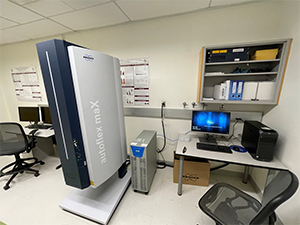 Our Bruker Autoflex Max matrix-assisted laser desorption/ionization – tandem time of flight (MALDI-TOF) mass spectrometer was obtained in 2024 with funding from the National Science Foundation (CHE-2320174).
Our Bruker Autoflex Max matrix-assisted laser desorption/ionization – tandem time of flight (MALDI-TOF) mass spectrometer was obtained in 2024 with funding from the National Science Foundation (CHE-2320174).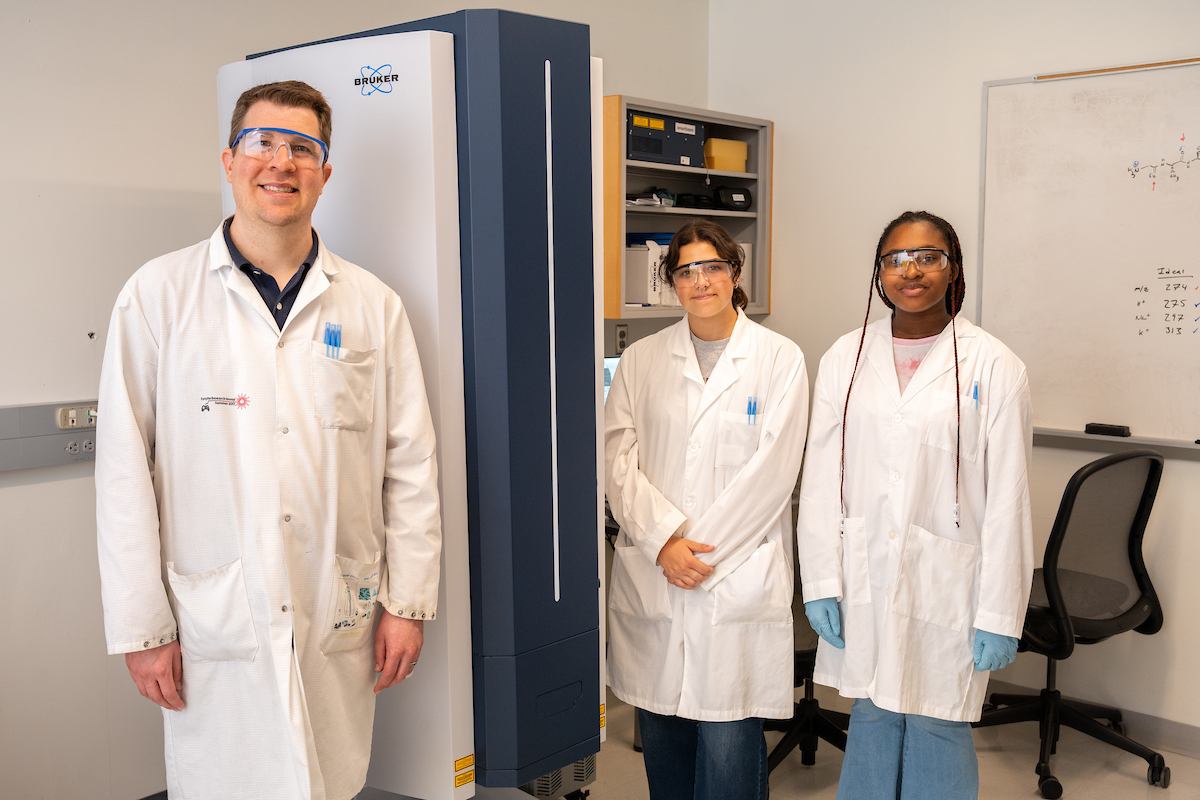 MALDI-TOF is commonly used in industry and biomedical research to detect various types of molecules such as pharmaceuticals, proteins, lipids and polymers.
MALDI-TOF is commonly used in industry and biomedical research to detect various types of molecules such as pharmaceuticals, proteins, lipids and polymers.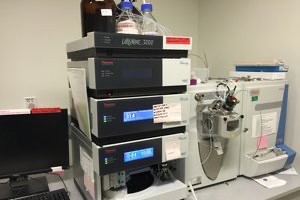 Thermo LTQ Velos Pro, our LC-MS system used in Biochemistry Lab, Instrumental Lab, Environmental Chemistry Lab, Bioanalytical Chemistry Lab, Industrial Chemistry Lab, and faculty-mentored student research.
Thermo LTQ Velos Pro, our LC-MS system used in Biochemistry Lab, Instrumental Lab, Environmental Chemistry Lab, Bioanalytical Chemistry Lab, Industrial Chemistry Lab, and faculty-mentored student research.
Funded by the National Science Foudation Major Research Instrumentation Program, the LC-MS system combines the separation capabilities of the HPLC with the mass analysis capabilities of a mass spectrometer. -
Spectroscopy
Infrared (IR) Spectroscopy
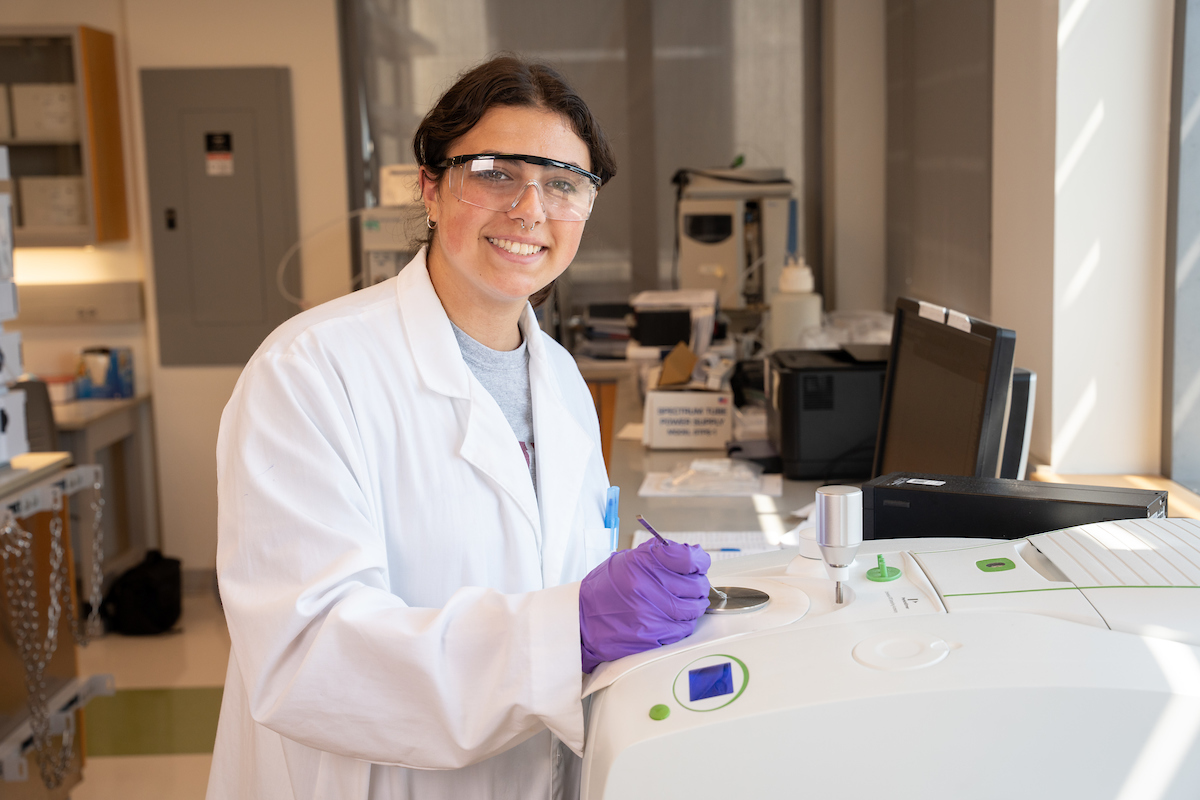 An IR spectrometer detects frequencies of infrared light absorbed by a molecule. In IR Spectroscopy, we can study and identify chemical substances in solids, liquids, and gases.
An IR spectrometer detects frequencies of infrared light absorbed by a molecule. In IR Spectroscopy, we can study and identify chemical substances in solids, liquids, and gases.The Chemistry and Biochemistry Department utilizes five Bruker Alpha FT-IR spectrometers using Opus 6.5 software. In additional, students and faculty can access a Perkin Elmer FT-IR spectrometer Spectrum 100 using Spectrum software.
Ultraviolet/Visible (UV/Vis) Spectrophotometry
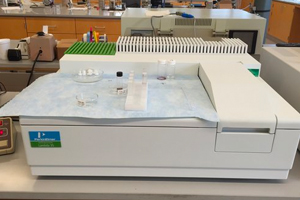 The UV-Vis spectrophotometer measures the amount of ultraviolet (UV) and visible light that is absorbed by the sample.
The UV-Vis spectrophotometer measures the amount of ultraviolet (UV) and visible light that is absorbed by the sample. UV-Vis spectroscopy quantifies compounds in various samples. It can be used for concentration measurements, observing structural changes in molecules and monitoring reaction kinetics.
The department's Perkin Elmer Lambda 35 spectrophotometer is a double beam instrument with deuterium and tungsten lamps providing a wavelength range of 190 – 1100nm. Variable bandwidths from 0.5 – 4 nm are possible.
We also utilize four Varian Cary50 UV/vis spectrophotometers (190 – 1100 nm wavelength range) that use the Cary Win UV 55.0 software.
Raman Spectroscopy
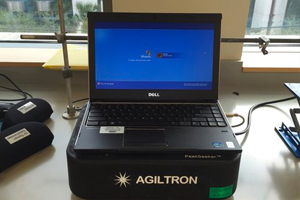 A Raman spectrometer determines the vibrational modes of molecules. It is used in chemistry to provide a fingerprint by which molecules can be identified.
A Raman spectrometer determines the vibrational modes of molecules. It is used in chemistry to provide a fingerprint by which molecules can be identified.The department's PeakSeeker Raman Spectrometer has an excitation wavelength of 785 nm and a spectral range of 200 to 3000 cm-1.
Luminescence Spectroscopy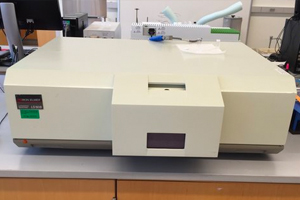 A luminescence spectrometer measures the emission of light from a sample. It can be used to characterize the electronic properties of molecules.
A luminescence spectrometer measures the emission of light from a sample. It can be used to characterize the electronic properties of molecules.The department's Perkin Elmer LS 50B Luminescence Spectrometer has a pulsed high pressure Xenon lamp and is capable of both excitation (200-800 nm) and emission (200 – 900 nm) scans.
Atomic Spectroscopy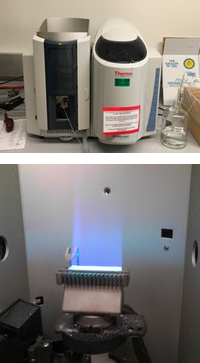 The Atomic Absorbance Spectrometer measures the concentration of chemical elements in a sample.
The Atomic Absorbance Spectrometer measures the concentration of chemical elements in a sample.
The department's Thermo Scientific iCE 3000 Atomic Absorption Spectrometer is equipped with a flame atomizer for elemental analysis. It is capable of performing both atomic absorption and atomic emission measurements. -
Chromatography
Chromotography is used to separate mixtures of chemical substances into its individual compounds.
Gas Chromotography
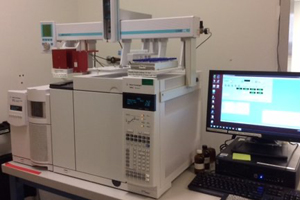 The GC-MS consists of 7890A Gas Chromatography and 5975C Triple-Axis Mass Detector equipped with a CTC-PAL autosampler that uses MSD Chemstation software. Students in Organic Chemistry and Chemical Synthesis and Characterization regularly use the GC-MS.
The GC-MS consists of 7890A Gas Chromatography and 5975C Triple-Axis Mass Detector equipped with a CTC-PAL autosampler that uses MSD Chemstation software. Students in Organic Chemistry and Chemical Synthesis and Characterization regularly use the GC-MS. 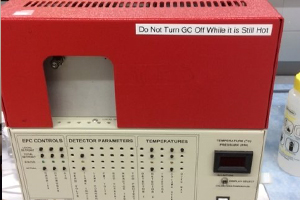 The department also utilizes four SRI 310C GCs that use Peaksimple software.
The department also utilizes four SRI 310C GCs that use Peaksimple software.
The system is used to teach the principles of gas chromatography by separating and analyzing the components of a gas mixture.
Liquid ChromotographyThe Department of Chemistry & Biochemistry has multiple HPLC systems for teaching and research purposes.
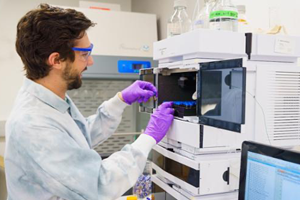 Two Agilent 1220 HPLC systems with variable wavelength (190-950 nm) detectors are used in Principles of Chemistry Lab, Fundamentals of Analytical Chemistry Lab, Environmental Chemistry Lab, and faculty-mentored student research.
Two Agilent 1220 HPLC systems with variable wavelength (190-950 nm) detectors are used in Principles of Chemistry Lab, Fundamentals of Analytical Chemistry Lab, Environmental Chemistry Lab, and faculty-mentored student research.
Ion Chromatography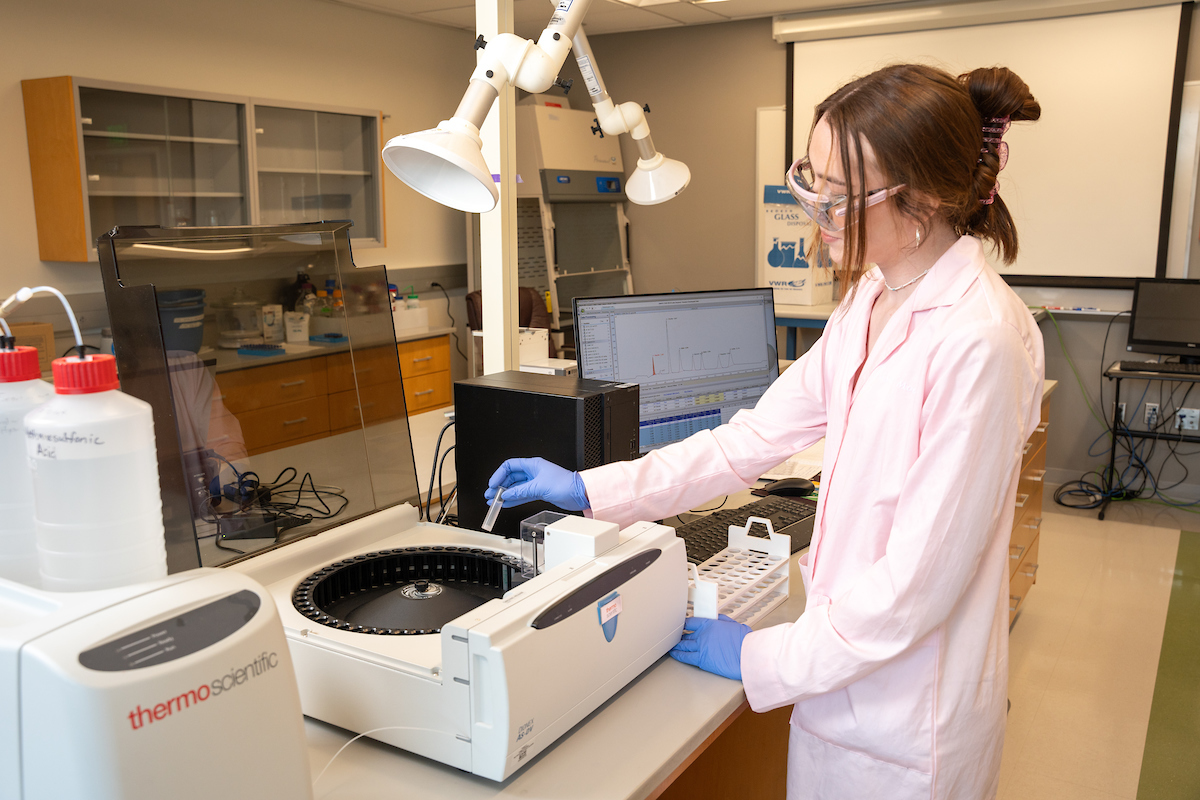 The department has a Thermo Scientific Dionex Easion Ion Chromatography system with an autosampler. This instrument separates ions based on size and charge so both cation and anion concentrations can be determined in water. The instrument can be used in Fundamentals of Analytical Chemistry Lab, Envrionmental Chemistry Lab, and faculty-lead research projects.
The department has a Thermo Scientific Dionex Easion Ion Chromatography system with an autosampler. This instrument separates ions based on size and charge so both cation and anion concentrations can be determined in water. The instrument can be used in Fundamentals of Analytical Chemistry Lab, Envrionmental Chemistry Lab, and faculty-lead research projects. -
Microscopy
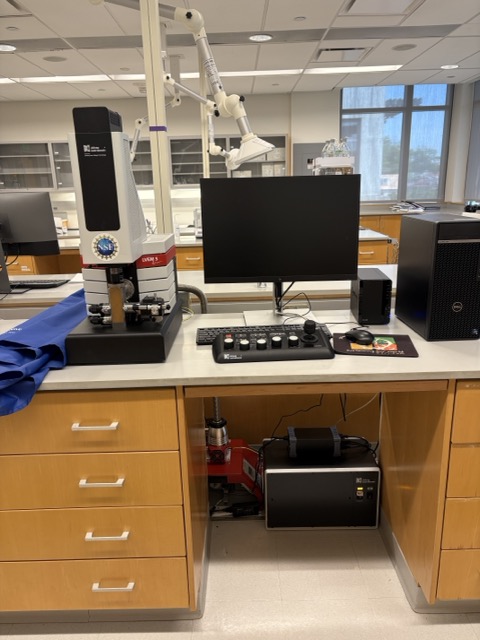 The LVEM5 is a compact electron microscope that uses electrons instead of light to see extremely small details to image viruses, cells, and nanoparticles. It offers high-resolution imaging and multiple modes (TEM, SEM, STEM), making it a valuable tool for research in chemistry, materials science, and biology. This instrument was acquired in 2024 with support from a National Science Foundation Major Research Instrumentation Award (Grant #2407691).
The LVEM5 is a compact electron microscope that uses electrons instead of light to see extremely small details to image viruses, cells, and nanoparticles. It offers high-resolution imaging and multiple modes (TEM, SEM, STEM), making it a valuable tool for research in chemistry, materials science, and biology. This instrument was acquired in 2024 with support from a National Science Foundation Major Research Instrumentation Award (Grant #2407691). -
Protein Purification Systems
 The department has four FPLC Akta Prime Plus protein purification systems from GE Healthcare that use the Prime View 5.31 software.
The department has four FPLC Akta Prime Plus protein purification systems from GE Healthcare that use the Prime View 5.31 software.The systems perform general purification tasks including high-quality gel filtration, HIC, affinity chromatography, buffer exchange, and ion exchange.
The protein purification process separates the protein and non-protein parts of the mixture and then separates the desired protein from all other proteins.
